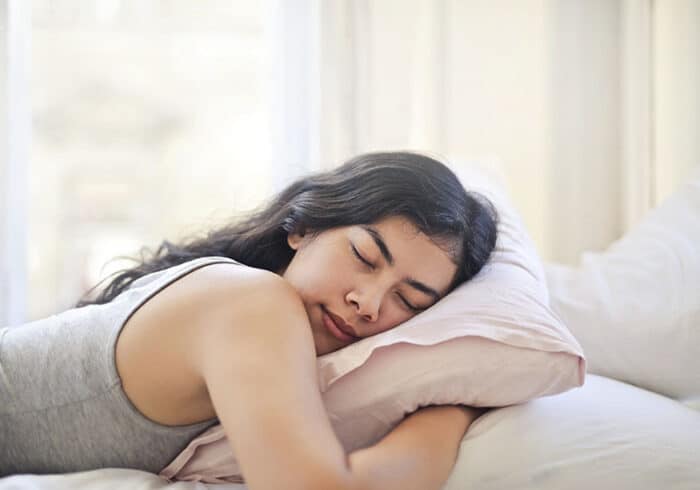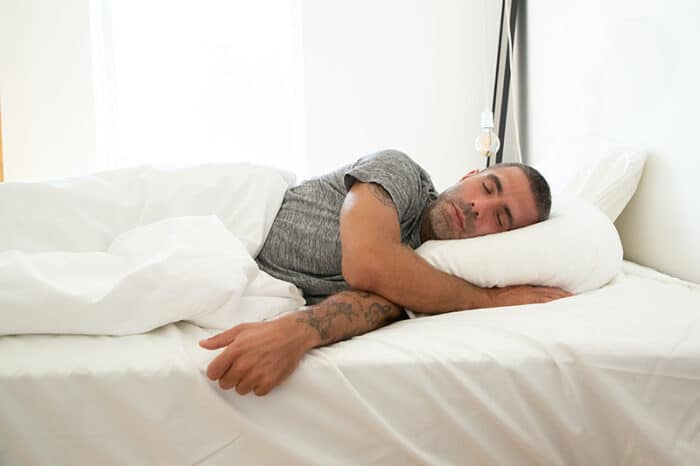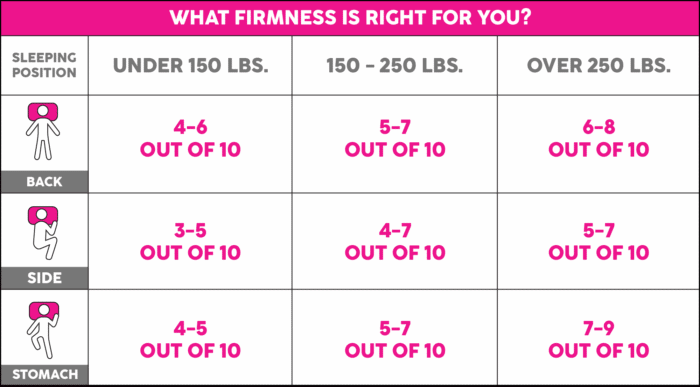If you were to survey a random assortment of individuals about their preferred sleeping position, approximately 16% of those surveyed would identify as stomach sleepers.
Stomach sleepers can either begin their slumber on their stomach or shift to this position during the night.

Regardless of how one ends up in this stance, sleeping on one’s stomach can give rise to certain discomforts if one isn’t cautious.
This comprehensive guide will outline the potential risks associated with stomach sleeping and offer tips on how to become a more proficient stomach sleeper if you frequently find yourself facing downward. So, let’s begin.
In This Guide:
Risks of Stomach Sleeping
Improving Stomach Sleeping
Frequently Asked Questions
When lying on your stomach, achieving proper spinal alignment becomes challenging.
This is particularly true if you use a thick pillow under your head, as it causes the spine to curve slightly upwards from the lower back and elongate towards the head.
While eliminating the pillow may seem like a solution, it is not ideal since it flattens the natural curvature of the spine.

Maintaining this posture throughout the night can result in back tension and contribute to poor spinal alignment, ultimately leading to back pain.
In addition to back pain, stomach sleeping can also cause discomfort in the neck muscles. When lying on your stomach, your head naturally tilts to either the left or right side.
This forceful twisting motion also affects the spinal column at the base of the neck, which can inflame the surrounding muscles.
Interestingly, stomach sleeping can even lead to wrinkles and skin issues. When one sleeps on their stomach, their face is pressed more firmly into the pillow compared to those who sleep on their back.

This direct contact between the face and the pillow can crease the skin, leading to the development of deeper wrinkles over time.
Breakouts may arise for similar causes as well. When you find yourself buried amidst a cushion, the air flow towards your skin may not be as optimal. This can lead to the penetration of facial oils or dirt into your pores, potentially resulting in breakouts.
An evident fact that might strike you is that stomach sleeping can actually have adverse effects (or at the very least, discomfort) during pregnancy.

As your pregnant belly expands, any additional pressure can lead to discomfort as it compels the baby to move closer to your spine. This increased pressure can trigger back pain or even aggravate sciatica pain.
If you happen to relish stomach sleeping or casually struggle to break the habit, fret not. Being a stomach sleeper does not imply being a poor sleeper inherently.
Nevertheless, there are a few suggestions you can consider to mitigate potential risks or discomfort associated with stomach sleeping.
Strategic pillow placement can play a crucial role in minimizing pressure points, tension, or other sleep-related pains that may arise from stomach sleeping.
- To prevent neck pain, opt for a thinner pillow to support your head.
- To prevent back pain, place a pillow under your hips to provide support to your spine.

Pillows can also act as a catalyst for the transition to side sleeping if you intend to cease stomach sleeping.
Simply place a lengthy body pillow beneath your stomach and lie slightly on your side. This emulates the sensation of stomach sleeping while simultaneously redistributing the pressure strains onto your hips.
Additionally, a firmer mattress can significantly aid stomach sleepers. While personal preferences may vary, stomach sleepers typically require the support of a medium-firm to very firm mattress.

Your body weight also bears relevance in this context. Lightweight stomach sleepers might suffice with a softer mattress (4-5 on the firmness scale), while those of moderate to heavier weight generally necessitate a firmer mattress to attain the same level of support.
As illustrated in the aforementioned chart, different firmness levels are suitable for side sleepers and back sleepers. However, in all weight categories, stomach sleepers generally require a firmer mattress.
Dedicating time in the morning to perform stretching exercises can prove instrumental in counterbalancing the discomfort experienced from stomach sleeping.

A brief and uncomplicated morning stretching routine can still be highly effective. Two stretches that work particularly well for individuals who sleep on their stomach are as follows:

You may access the accompanying video guides by clicking on the titles below. For optimal outcomes, perform these stretches immediately upon waking to facilitate a swift recovery of your body.
MORE: A Comprehensive Morning Yoga Warm-Up (20 minutes)

Alternatively, if you prefer, there is a hyperlink provided above for a complete 20-minute video demonstration of morning warm-up stretches suitable for after sleep.
What is the most beneficial sleeping position for one’s health? It is often recommended that individuals sleep on their backs as it is considered the healthiest position for optimal sleep.
Is a firm mattress necessary for those who sleep on their stomachs? Absolutely. Stomach sleepers require a firmer mattress compared to side sleepers. The additional firmness helps maintain proper spinal alignment and alleviates the risk of uncomfortable sagging or pressure points.
How can I break the habit of stomach sleeping? Transitioning from sleeping on your stomach to becoming a side sleeper is easiest. To effect this change, begin by placing a long body pillow underneath your stomach. However, the majority of your body pressure should still be focused on your hips. This method provides the sensation of sleeping on your stomach without incurring any detrimental effects.
Why is sleeping on your stomach considered unhealthy? Sleeping on your stomach can lead to increased back and neck pain, as well as aesthetic concerns such as the development of more wrinkles or skin breakouts. Additionally, it can pose risks and discomfort for pregnant women and their unborn babies.
What does sleeping on your stomach indicate? Research indicates that individuals who sleep on their stomachs tend to exhibit higher levels of anxiety, impulsiveness, and rigidity in their behavior. Moreover, placing your hands above or under the pillow is associated with a dislike for criticism.


